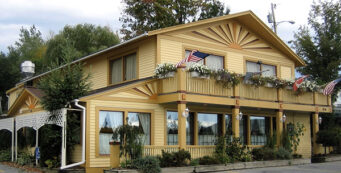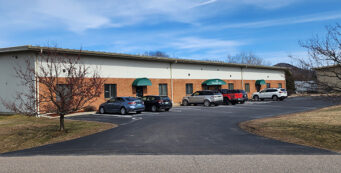Amid sustained job growth, strong consumer spending, and increased demand
for rental housing, the commercial real estate market continued to recover in the
fourth quarter, marked by rising occupancy across all commercial property
markets. However, the course of the pandemic, including the emergence of the
deadlier Omicron variant, will continue to greatly determine the direction and
pace of recovery across property markets.
Since 2020 Q2, occupancy in multifamily rental properties has increased by 1.06
million units due to rising rental demand as home prices became less affordable.
The median asking rent has spiked to 11% year-over-year, with asking rents rising
at a double-digit pace in a third of metro areas, particularly in metro areas in
Florida, the Carolinas, Texas, Georgia, Louisiana, Alabama, Nevada, Arizona, and
New Mexico, as well as in Utah and Idaho.
In the office market, occupancy increased modestly by 661,338 square feet in the
past three months through November 29, with a long way to go to absorb the
132.2 million square feet of office space that has become unoccupied. The fraction
of workers working from home continues to trend down, to just 12% of the
workforce, but return-to-work plans have been pushed back due to the
resurgence of the Delta variant in the summer. The emergence of the deadlier
Omicron variant could again push back these plans.
In the industrial market, demand remains strong. The property market has the
lowest vacancy rate among the core markets, at 4.2%. Rents are up 7.9% yearover-year. Since 2020 Q2, 681 million square feet of space has been absorbed.
Occupancy in the retail brick-and-mortars is also increasing, as consumers started
to shop at brick-and-mortar stores, leading to some market share recovery
(market share of non-store retailers slightly declined from 18% in early 2021 to 17%
as of November). The vacancy rate stood at a modest 4.6%. Rents rose 2.6% yearover-year.
The hotel market also continues to recover, with business and personal travel
picking up, as indicated by the rising cost of energy commodities (e.g. gasoline)
that rose 49.5% year-over-year in October. The average 3-month hotel occupancy
rate rose to 62.6% in October, up from 48.5% one year ago.
In summary, the commercial real estate market has continued to recover on all
fronts on the back of the sustained recovery in the job market, increased
consumer spending, and workers trickling back to the office. However, the course
of the pandemic, including the emergence of the deadlier Omicron variant, will
continue to greatly determine the pace of the commercial real estate market’s
recovery and of major metro areas (e.g. New York, San Francisco, Chicago, Los
Angeles, Washington DC, and Boston) that are still grappling with huge declines
in office occupancy.








